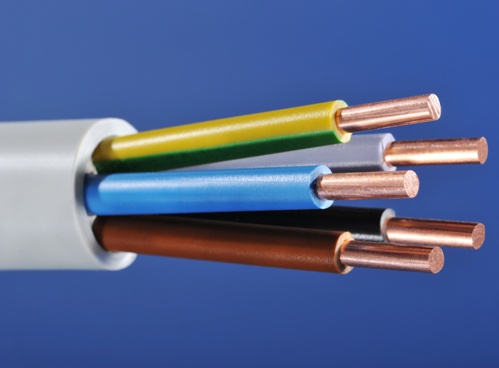Standard sizes of wires and cables
One of the characteristics of the manufactured cable and wire products is the cross-section of the wires. This parameter is taken into account in the design of various electrical cables in all areas of human activity. In this article, we will look at the standard cross-sections of wires, as well as give examples where different cross-sections are used.
Standard range of cross-sections of wires and cable wires: 0.5; 0.75 1; 1.5; 2.5; 4; 6; ten; 16; 25; 35; 50; 70; 95; 120; 150; 185; 240; 300; 400; 500; 625; 800; 1000; 1200; 1600 sq. mm This range is suitable for both copper and aluminum wires, except for the minimum cross-section - for aluminum cable the minimum cross-section is 2.5 sq. mm Aluminum wire with a lower cross-section is not available due to its low strength - aluminum easily breaks and "floats" in the place of the contact connection.

Home wiring
Copper wire with a cross section of 1-1.5 square meters is used for wiring lighting devices in everyday life. mm or aluminum wire with a cross section of 2.5 sq.mm, as this is the minimum cross-section of aluminum.
To power individual contacts, use a copper or aluminum wire with a cross section of 2.5 kV. mm
A cable with a cross-section of 4-10 sq. mm is used in everyday life to power powerful household electrical appliances that require a separate line with a large load capacity, and to power distribution boxes from which several sockets in a certain room are powered.
A cable with a large cross-section in everyday life can only be used to supply electricity with a household switchboard.
Wires with a cross section of 0.5-2.5 sq mm are used as power cables for most household electrical appliances.
Industrial enterprises, energy enterprises
Small wires 1-6 sq. mm are used to connect secondary switching circuits of various protective devices, automation and control of various equipment in industrial enterprises, power plants, distribution substations.
To control powerful equipment, high-voltage switches, a cable with a large cross-section, up to 120 sq. mm, is used, which feeds powerful control solenoids.
In power circuits with a voltage class of up to 1000 V, supplying various equipment, a cable with a cross section of 2.5 to 50 square meters is used. mm Cable with a larger cross-section is used as an input cable from transformers to switchgear or switchboards for various purposes.
In high-voltage networks 6-750 kV, cable, busbars, busbars with a cross section of 35 sq. mm to 1600 sq. mm
